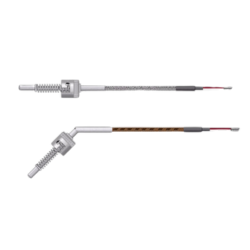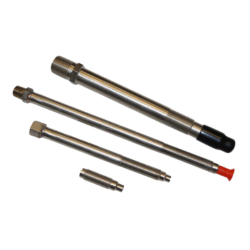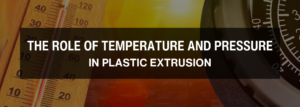Authored by Isabel McCord
Plastic extrusion is a pivotal process in the manufacturing of various plastic products, from pipes and sheets to complex profiles and films. The efficiency and quality of the extrusion process largely depend on two critical factors: temperature and pressure. Managing these parameters effectively ensures the production of high-quality plastic products, minimizes waste, and enhances overall operational efficiency.
Imagine plastic extrusion as a finely tuned engine—temperature and pressure are the heat and torque that keep everything running smoothly. Just like in a high-performance machine, getting the balance right between these two factors is what drives quality and efficiency. Mismanage either, and you’re left with sputtering output, wasted resources, and a lot of headaches.
The Importance of Temperature in Plastic Extrusion
Temperature is the heat under the hood that makes everything run. Too hot, and you risk overheating; too cold, and nothing moves. In extrusion, maintaining the right temperature ensures that your polymer flows like a well-oiled machine, ready to be shaped into the perfect product.
- Optimal Melt Temperature: Each type of plastic has an optimal melt temperature range. Maintaining the correct temperature ensures that the polymer flows smoothly through the extruder, reducing the risk of defects like bubbles, uneven thickness, or incomplete filling of molds. Just like engines require different grades of fuel, polyethylene needs lower heat compared to polycarbonate, so the temperature settings for extrusion need to be carefully calibrated.
- Zoning and Gradients: Think of your extruder as a multi-stage turbocharger, with each heating zone playing its part in boosting the melt. These zones help in gradually melting the plastic, ensuring a consistent flow. The right temperature gradient across these zones ensures smooth acceleration without thermal degradation or incomplete melting—just like keeping your turbo running at peak efficiency.
Products for Temperature Control:
- Temperature Sensors: These are the gauges on your dashboard, giving you real-time data to keep everything in check. Whether it’s a thermocouple or an RTD, precise sensors are essential to avoid any redlining.
- Heaters: Depending on the material and application, different types of heaters, such as infrared heaters, cartridge heaters, or band heaters, are used to achieve and maintain the desired temperature. These components are your spark plugs—reliable and efficient, ensuring that your extrusion process fires on all cylinders.
The Role of Pressure in Plastic Extrusion
If temperature is the heat, pressure is the torque. It’s the force that pushes your product through the die, shaping it with precision. Without the right pressure, your operation stalls out, but with too much, you risk blowing a gasket.
- Die Pressure: Think of this as the gear ratio—too low, and your product won’t take shape; too high, and it swells out of control. Precision here ensures your product is dense and dimensionally accurate, just like shifting gears at the perfect RPM.
- Back Pressure: Back pressure is the resistance encountered by the plastic as it moves through the screw and towards the die. Back pressure is like tuning your exhaust system—necessary for optimal performance, but too much can create unwanted strain. Managed properly, it ensures your plastic is uniformly melted and mixed, delivering consistent results without overloading your extruder.
Products for Pressure Control:
- Pressure Controllers: These are like torque converters, ensuring smooth and controlled power transfer throughout the process. Advanced pressure controllers keep your extrusion line running efficiently, preventing hiccups and stalls. These controllers often work in conjunction with pressure sensors to provide real-time feedback, ensuring optimal pressure conditions throughout the process.
- Rupture Plugs: These safety devices are your pressure relief valves, stepping in when things get too intense. They protect your equipment by providing a controlled release, keeping everything running smoothly under the hood.
Balancing Temperature and Pressure for Optimal Extrusion
Achieving the perfect balance between temperature and pressure is crucial for the success of the plastic extrusion process. Get the balance right, and you’ll hit that sweet spot where quality, efficiency, and performance come together. If the temperature is too low, you’ll need more pressure to maintain flow, like having to downshift on a steep incline. Conversely, too much heat or pressure can lead to breakdowns, much like overworking an engine. By utilizing precise temperature sensors, reliable heaters, advanced pressure controllers, and safety devices like rupture plugs, manufacturers can optimize their extrusion processes, reduce downtime, and produce high-quality plastic products that meet industry standards.
Southern Heat Corporation offers a comprehensive range of products designed to meet the exacting demands of plastic extrusion. From top-notch temperature sensors to robust pressure controllers and rupture plugs, our solutions are engineered to help you achieve unparalleled control and consistency in your extrusion operations.
For more information on our products and how they can enhance your extrusion process, contact Southern Heat Corporation today.

